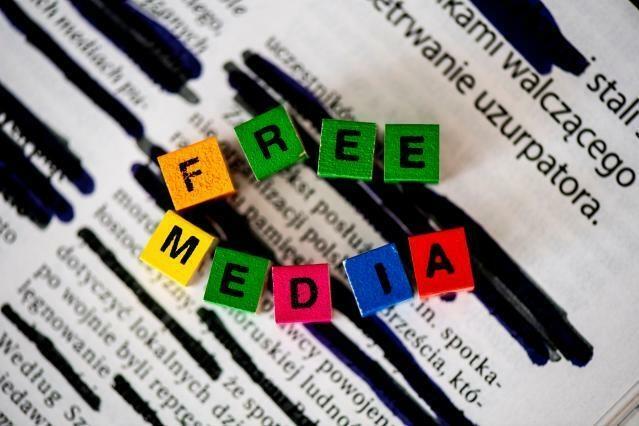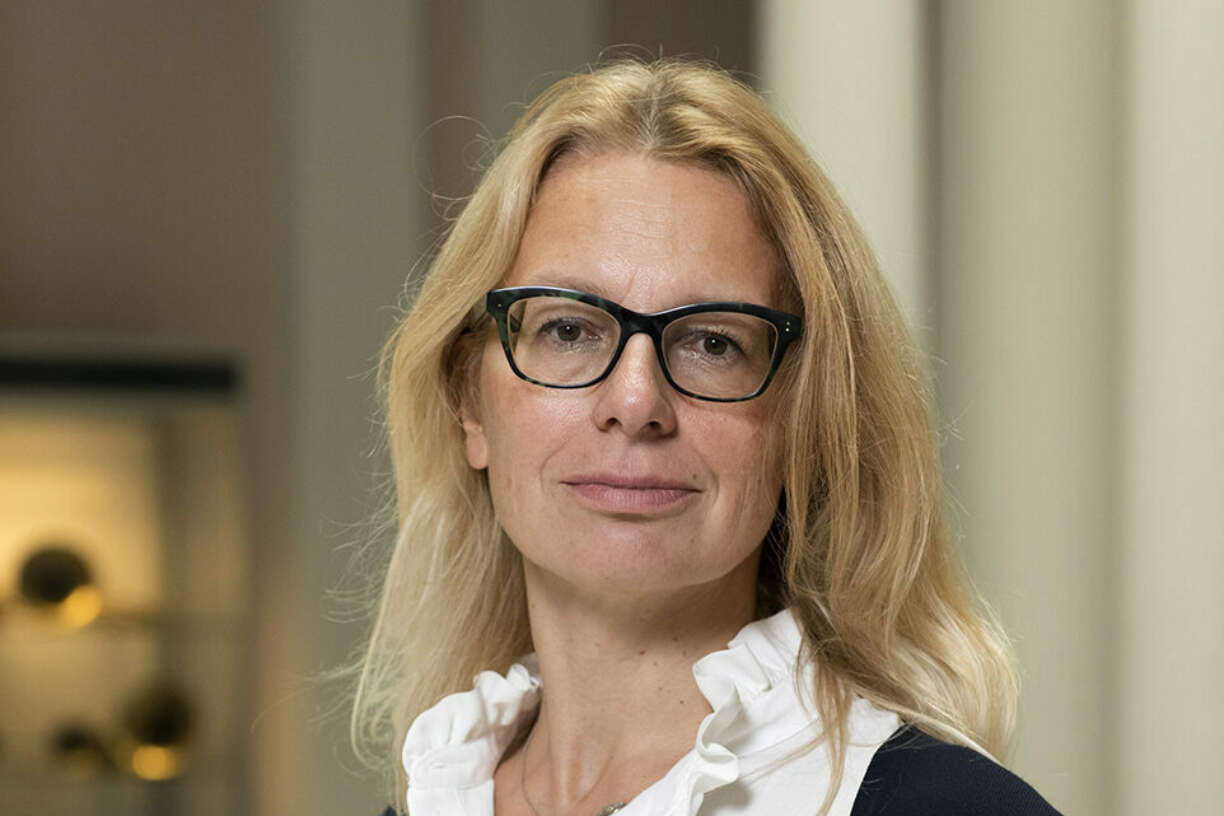April 19, 2023
Expert opinion on draft European Media Freedom Act *

In December last year, Twitter suspended without notification the accounts of several leading journalists for alleged violations of the terms of service through their reporting. The move was widely criticised by journalists, civil society, academics, and lawmakers, and led to calls for regulatory action to protect freedom of expression and the freedom of the media. The goal of the European Media Freedom Act (EMFA) is to do exactly that: create a favourable environment for freedom of expression and the protection of media freedom. So, the question is what would the proposed European Media Freedom Act, and here in particular Articles 17 and 18, do to protect the fundamental rights of journalists in Europe?
Individual journalists not covered & insufficient procedural safeguards
The answer right now would be: not much. Art. 17 EMFA applies to “media service providers” in the sense of “a natural or legal person whose professional activity is to provide a media service and who has editorial responsibility for the choice of the content of the media service and determines the manner in which it is organised“. The role of journalists is to engage in critical reporting and is often separate from that of an editor. What is more, Art. 17 EMFA only applies when a platform “decides to suspend the provision of its online intermediation services in relation to content” by a media provider, making it at least very unclear whether the provision also extends to account terminations. The consequence is that individual journalists could not invoke Art. 17 EMFA in its current form and they would not be entitled to receive prior notice.
The exclusion of individual journalists from the scope of Art. 17 EMFA echoes more general concerns about the scope of Art. 17 EMFA (1). The question is why certain actors are included while other contributors to the public debate are excluded (such as civil society organisations or individual journalists, bloggers, etc.). Right now, this decision is not well explained and seems somewhat arbitrary. Seeing the critical role that individual journalists play in realising media freedom, this outcome seems to be at odds with the overall objective of the EMFA.
In addition, Art. 17 EMFA in its current form seems to leave the extremely complex decision of whether a media outlet qualifies as a media service provider and is editorially independent entirely to the discretion of platforms. Defining a media service provider or editorial independence is a very complex assessment that platforms are not well-prepared to perform. The EMFA also does not foresee the possibility to contest that decision before a regulatory authority or court. It is evident that Art. 17 EMFA does seek to protect media freedom and the right to freedom of expression. However, the large discretion for platforms, the complexity of a task for which they are not well-positioned to perform, together with the lack of a clear explanation why certain actors are excluded and others are not opens up new concerns about the protection and operationalisation of the very same right the provision seeks to protect.
A company like Twitter would still have to provide individual journalists a statement of reasons and access to a complaint handling system under the DSA (Arts. 17 and 20 DSA). Art. 17 EMFA would add to that a statement prior to the suspension, at least for media organisations. Complaints by media would need to be handled with priority and undue delay. This in the end may mean little for media companies or individual journalists, however. News is a perishable commodity, and being handled with priority and without undue delay does not necessarily mean a complaint is handled fast enough for an article to remain relevant – especially if one only receives priority in the long line of moderation decisions handled by the overburdened content moderation team. Without a clear timeframe that takes into consideration the time-sensitivity of many news items, it is unclear what Art. 17 EMFA really adds to the procedural safeguards already provided for in the DSA, the more as right now there are no clear procedures to contest the final decisions made by the platforms before the Board, courts or national regulatory authorities.
Curiously, the EMFA does not even directly refer to the procedural safeguards in the DSA, but rather to Art. 4 (1) and Art. 11 of the Platform-To-Business Regulation. This reference to the Platform-To-Business Regulation instead of the DSA is difficult to understand. If anything, this choice only confirms that right now, the scope of Art. 17 EMFA is focused on the providers of media services, and less so on protecting the freedoms and fundamental rights of individual journalists.
It is also worth stressing that neither Art. 17 EMFA nor Art. 14 DSA foresee a review of terms of use in the light of their impact on freedom of expression and the freedom of the media, even though recital 17 of the DSA also refers to the design of terms and conditions (2). The fundamental rights safeguards in Art. 14 (4) DSA only apply to the application and enforcement of the terms of use, not the scrutiny of the terms of use themselves. The DSA only stipulates that terms of use that do restrict freedom of expression be considered a systemic risk (Art. 34 (2) DSA) but does not provide for a critical review of terms and conditions in the light of fundamental rights.
Possible avenues to clarify & strengthen Art. 17 EMFA’s procedural safeguards
If the goal of Art. 17 EMFA was to also offer protection to individual journalists, broadening the scope of Art. 17 or at least clearly motivating why journalists are not considered for protection could be a possible direction to think.Another improvement to give the provision more ‘teeth’ would be to make a clearer and more explicit reference to the procedural safeguards in Art. 17 and 20 of the DSA, including possibly introducing a clearer timeframe.If the goal is more generally to provide sufficient procedural safeguards, a clear, transparent, and contestable process for qualifying a ‘media service provider’ in the sense of Art. 17 EMFA before the Board and/or national regulators as well as courts could go some way to remove concerns about the sole discretion of platforms and relying on platforms to perform this extremely complex decision that is yet so influential for the scope of Art. 17.Another potential procedural safeguard to ensure public accountability of the process could be more public transparency about the process on the site of platforms, for example by adding that information to the database of statements of reasons for moderation decisions in article 24(5) DSA.Not only the application of the terms of use, but the terms of use in themselves should be compatible with freedom of expression and the freedom of the media and sufficiently precise to avoid arbitrary decisions by VLOPs.
The problem of unequal negotiation power, particularly from the perspective of smaller and local media
An important instrument in Art. 17 EMFA is a “meaningful and effective dialogue” with the media service provider with a view to finding an ‘amicable solution’, in the sense of Art. 17 (4) EMFA. In the earlier example this could mean that in case of repeated suspensions, the media organisations behind the journalists could request a dialogue.
Whether or not such a dialogue can be successful will very much depend on the balance in negotiation power, in other words: what kind of media organisations will join that dialogue. In the above example, the journalists referred to happened to work for large and well-known media organisations such as the New York Times, Washington Post and CNN. Organisations of this calibre could bring some weight to the dialogue. The question is: would this also be true for journalists working at less affluent media organisations – smaller and local media for example? Arguably it is those media providers that will be particularly affected by interventions from VLOPs (3) but that also do have far less negotiation power. The danger is that the strong reliance on the mechanism of a “meaningful and effective” dialogue will disadvantage or even exclude smaller and local media organisations.
Next to the concerns about unequal negotiation power, Art. 17 (4) puts much emphasis on private ordering: platforms’ ability to decide who does and does not use their service, and how visible they are. This can be a useful mechanism for solving certain conflicts in general though the EMFA does not provide any guidance on how such an amicable solution would need to look like. But maybe even more fundamentally, when it comes to conflicts about potential interference with fundamental rights and media freedom, it is difficult to see how such conflicts could be subject to negotiations at all. Unjustified interferences with fundamental rights should never be subject to ‘amicable solutions’ only. Rather, in these situations the positive protection duty of states requires a more effective mechanism to protect media freedom.
- To protect media pluralism and freedom of also smaller and local media outlets, it is important that Art. 17 EMFA is amended to be more inclusive, for example by creating possibilities for collective action, or by replacing the meaningful dialogue with a right, and obligation to negotiate in good faith, and where such negotiations fail foresee access to a complaint or arbitration procedure before the board or national regulatory authorities (4);
- Alternatively, one could think of strengthening the role of the Board (as in the current EMFA version the Board only needs to be notified) and a possibility for media providers to file a complaint to the Board in case the dialogue is unsuccessful.
An important opportunity: addressing more broadly structural problems in the media-platform relationship
Art. 18 could be a real opportunity to address more broadly some of the more structural concerns in the journalism-platform relationship.
Art. 17 EMFA is addressing one particular problem in the media/journalism-platform relationship – the takedown of media content. The takedown of content is one out of a far broader set of potential problems in the media/journalism-platform relationship, and possibly not even the most pressing one. The problematic nature of interference with media content itself can be part of a more structural problem, namely the existence of structural dependencies between VLOPs and the media.
Such dependencies can and have manifested themselves in conflicts about access to technology, data, fairness in the contractual relationships, brand visibility, more generally visibility and findability (5), and they can have negative repercussions for media freedom, pluralism, journalistic resilience and independence and the fair distribution of economic and opinion power (6). Right now, neither the DSA, nor Art. 17 nor Article 18 EMFA offer mechanisms to negotiate and address potential imbalances and sources of unfairness and conflicts with media freedom in the VLOP-media relationship.
The scope of Article 18 EMFA in its current form is still rather limited, focusing on best practices to foster access to diverse offers of independent media. Article 18 EMFA in its current form does not address more substantial conflicts that affect the balance and fairness of VLOP-media relationships, and potentially the resilience of the media more generally. And again there is the danger that smaller and local media organisations will be disadvantaged in negotiations. Arguably, not addressing these important issues for the media and the democratic role of the media in society, however, would be a missed opportunity for the EMFA.
The reference to monitoring adherence to self-regulatory initiatives aimed at protecting society from harmful content including disinformation and foreign information manipulation and interference is confusing and somewhat out of context here. It is also unclear what this language adds to Art. 34 of the DSA. Arguably, under Art. 34 DSA, VLOPS and VLOSEs have a legal obligation to engage in systematic monitoring and mitigation of disinformation and foreign information manipulation and interference as these constitute systemic risks. The problem of misinformation is not resolved by imposing a duty onto media to monitor said risk on platforms, nor would doing so be compatible fundamental rights, or be prudent to actively link media services (and journalism) to misinformation.
Possible way forward to addressing more broadly structural problems in the media/journalism-platform relationship
18 EMFA could be a means to create a process for addressing more fundamental and structural concerns that arise in the relationship between journalism and platforms. This could be achieved, for example, by broadening the scope of Article 18 EMFA and opening the dialogue up to other contentious issues that arise in the relationship between VLOPs and journalism.Creating the possibility for more critical review, and guidance on the design of relevant terms and conditions could also contribute to addressing these structural issues.One option to consider could also include a conflict-resolution mechanism or a duty to negotiate in case of conflicts about structural imbalances and instances of unfairness and mandate making public annual reports on the core points discussed and how dialogue helped to bring about change.The provision could be given additional weight by including a derogation for the EC or the Board to issue, where necessary, guidance or implementation acts.Finally, adding language that clarifies that such a structured dialogue must be inclusive and include (representatives of) local and smaller media organisations is important to safeguard plurality.
In conclusion
In its current form, Art. 17 EMFA arbitrarily excludes individual journalists from its scope of protection and fails to provide a clear reference to the procedural safeguards in the DSA. Moreover, the strong focus on “meaningful and effective dialogue’ as a governance mechanism and the lack of an arbitration procedure risks disadvantaging or even excluding smaller and local media organisations with insufficient time, resources, and negotiation power. More generally, relying on an ‘amicable solution’ in situations of repeated interferences with fundamental rights seems to sit at odds with the positive obligations of states under freedom of expression doctrine. For these reasons, there is room to improve Art. 17 EMFA by adding additional procedural safeguards and explicit language on inclusivity and the promotion of media pluralism.
Article 18 EMFA and the structured dialogues it mandates are an opportunity to provide a forum and process to raise and address pressing questions in the relationship journalism – VLOPs, and in so doing contribute to the overall diversity, sustainability, and resilience of the public sphere. To do so, however, the scope of those dialogues would need to be broadened, include some form of arbitration, and be made more inclusive to avoid disadvantaging or even excluding small and local media organisations.
* This articles is co-written by Max van Drunen, Ronan Fahy, Laurens Naudts, Stanislaw Piasecki, and Theresa Seipp (all affiliated to the Institute for Information Law (IViR), University of Amsterdam) and was originally published on the Digital Services Act Observatory on March 29, 2023.
(1) See Joan Barata, Protecting Media Content on Social Media Platforms, Verfassungsblog, 25 November 2022, https://verfassungsblog.de/emfa-dsa.
(2) Recital 17 DSA: “When designing, applying and enforcing those restrictions, providers of intermediary services should act in a nonarbitrary and non-discriminatory manner and take into account the rights and legitimate interests of the recipients of the service, including fundamental rights as enshrined in the Charter. For example, providers of very large online platforms should in particular pay due regard to freedom of expression and of information, including media freedom and pluralism.”
(3) Robyn Caplan and danah boyd, ‘Isomorphism through Algorithms: Institutional Dependencies in the Case of Facebook’ (2018) 5 Big Data & Society 2053951718757253.
(4) A possible model for such an obligation could be Art. 60 of Directive (EU) 2018/1972 of the European Parliament and of the Council of 11 December 2018 establishing the European Electronic Communications Code (Recast)Text with EEA relevance, OJ L 321, 17.12.2018, p. 36–214.
(5) Efrat Nechushtai, ‘Could Digital Platforms Capture the Media through Infrastructure?’ (2018) 19 Journalism 1043; Felix M Simon, ‘Uneasy Bedfellows: AI in the News, Platform Companies and the Issue of Journalistic Autonomy’ (2022) 0 Digital Journalism 1; Charis Papaevangelou, ‘Funding Intermediaries: Google and Facebook’s Strategy to Capture Journalism’ (2023) 0 Digital Journalism 1; Thomas Poell and Dijck, José, ‘Social Media and Journalistic Independence’ in James Bennett and Niki Strange (eds), Media independence: working with freedom or working for free? (Routledge, Taylor & Francis Group 2014); James Meese and Edward Hurcombe, ‘Facebook, News Media and Platform Dependency: The Institutional Impacts of News Distribution on Social Platforms’ (2021) 23 New Media & Society 2367.
(6) Theresa Josephine Seipp and others, ‘Dealing with Opinion Power in the Platform World: Why We Really Have to Rethink Media Concentration Law’ (2023) 0 Digital Journalism 1; Natali Helberger, ‘The Political Power of Platforms: How Current Attempts to Regulate Misinformation Amplify Opinion Power’ (2020) 8 Digital Journalism 842.
More results /
By Roel Dobbe • November 12, 2025
By Natali Helberger • José van Dijck • Claes de Vreese • October 27, 2025
By Natali Helberger • March 06, 2025
By Kätliin Lember • November 07, 2024
By Maurits Kaptein • June 06, 2025
By Leonie Westerbeek • November 22, 2024
 What data reveals about Meta and Google’s political ad ban in the EU
What data reveals about Meta and Google’s political ad ban in the EU
By Fabio Votta • November 05, 2025
By Ernesto de León • Fabio Votta • Theo Araujo • Claes de Vreese • October 28, 2025
By Charis Papaevangelou • Fabio Votta • September 22, 2025







